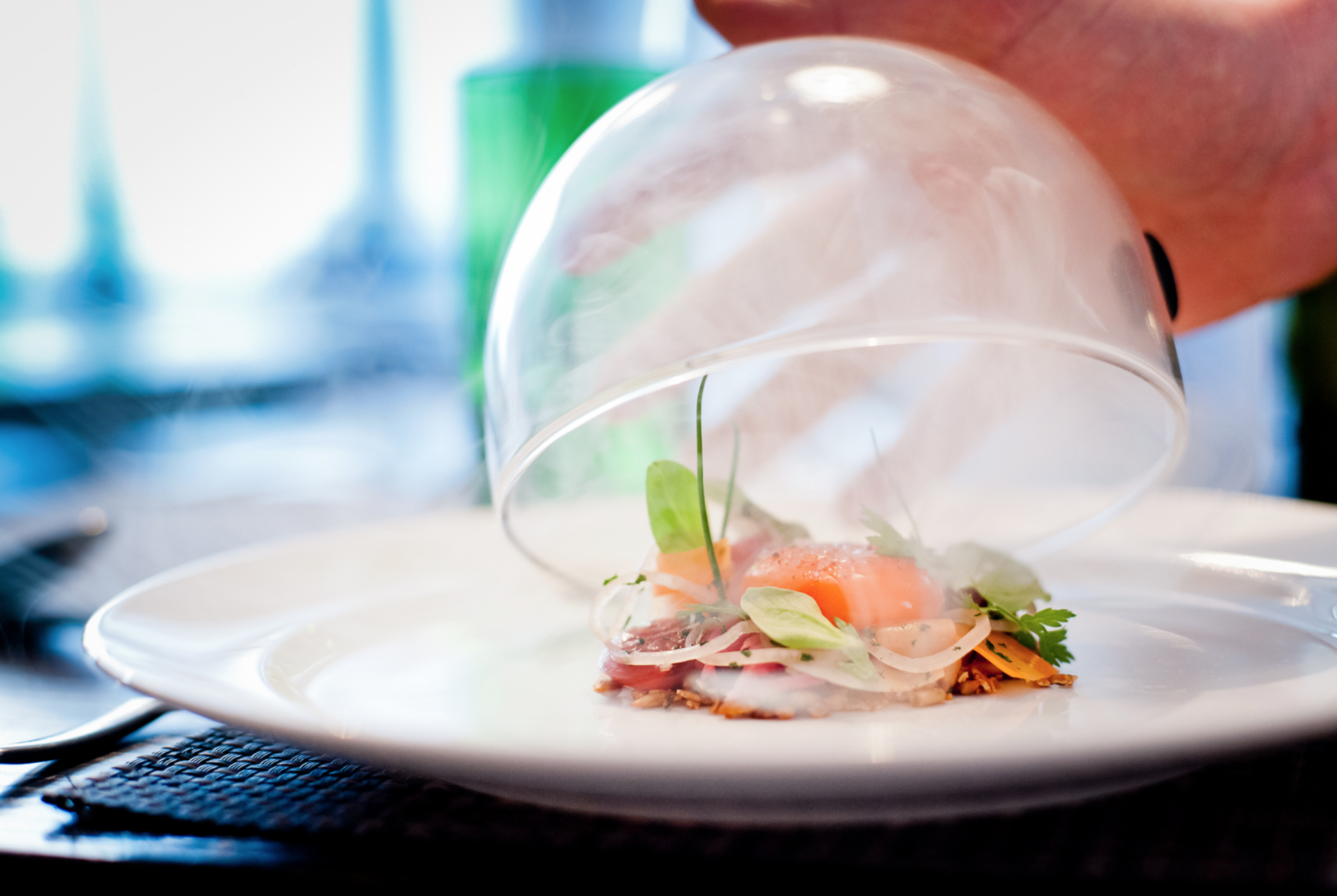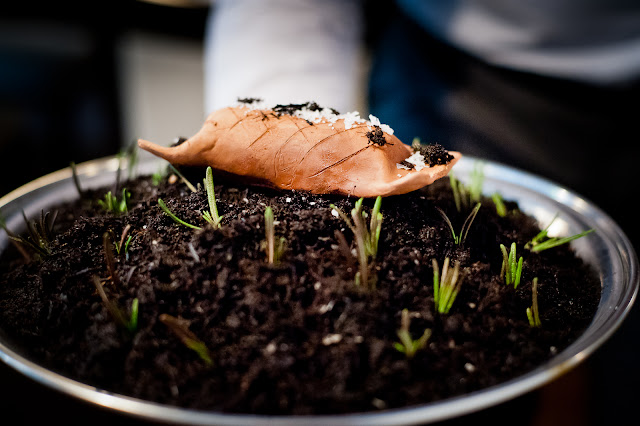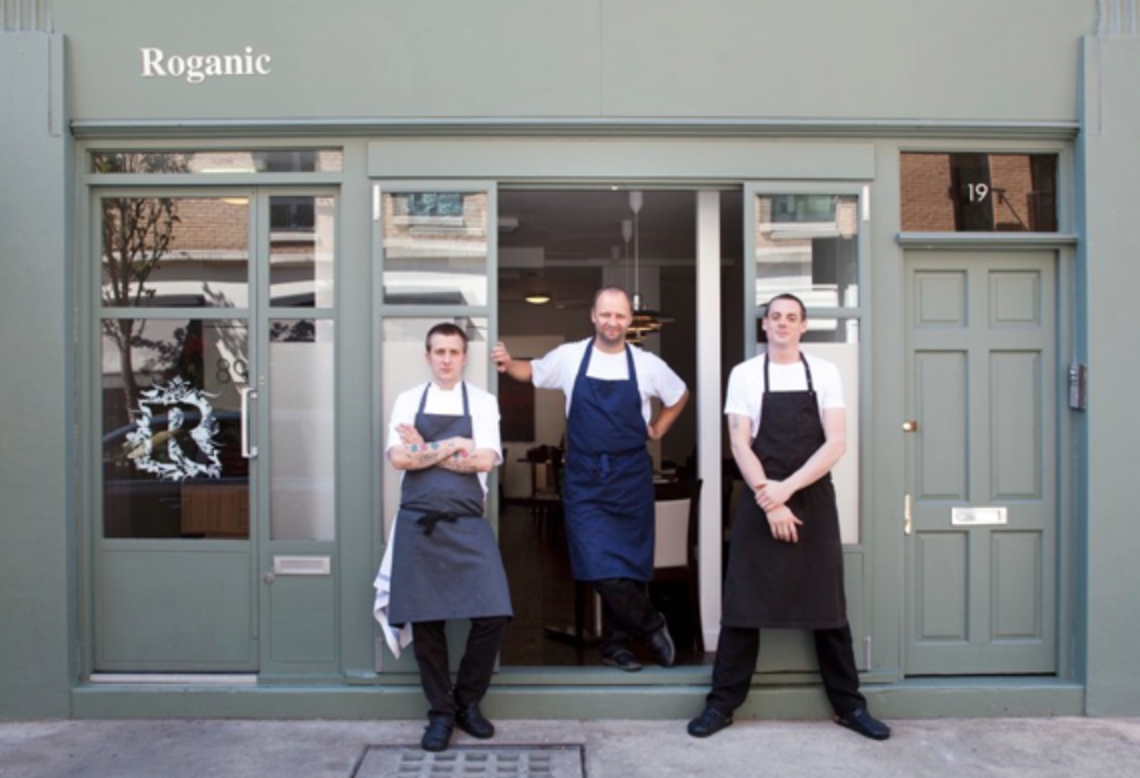Roganic is one of the few restaurants where I really, really want to see what’s new on the menu, and regret it when someone tries a dish that I didn’t have… Simon, Ben and the team have an incredibly sensitive palate and a very inventive use of seasonal and foraged ingredients. Last time I was at Roganic they were still using all of the glorious summer produce, with delicate herbs, edible flowers and the freshest ingredients. A winter menu is much more challenging for the kitchen – to truly stay seasonal, with a very limited range of produce, a kitchen has to be particularly inventive.
It was lovely to come back into the restaurant – the staff are so friendly and so enthusiastic that it was great to catch up with them again. Most of the original front of house team are still here, with Jon Cannon, Sandia Chang and Jack Settle still providing their usual warm cheer… Sandia has also taken on the duties of sommelier.
Roganic’s bread is always a joy, and considering the tiny space they have downstairs in the kitchen(s), is an amazing testament to their commitment. Today’s offerings included the famous pumpernickel, Irish sodabread, buttermilk, and a sweet chestnut and thyme parchment. These are served with freshly churned butter.
Roganic likes to play with water-bath egg yolks, and this winter it’s a smoked Braddock White duck egg with pickled roots, wild chervil and salt beef. The dish is served under a cloche filled with cherrywood smoke. The yolk becomes a dense, buttery globe of golden goo, offset by delicately soused grapes, which cut through the richness. Under the yolk a little stack of salt beef and something not unlike granola provide a depth of texture. The smell of cherrywood pervades the dish and the chervil adds a gently aniseed kick.
Taking mushrooms to an art form, the poached and grilled king oyster mushroom is served with dehydrated powdered mushroom soil, Douglas fir pine, red and yellow beetroot. Intense umami flavours are achieved by roasting off the tomato in a mixture of Lea & Perrins, tomato and barbecue sauces – a deeply satisfying sweet and sour flavour.
And how can you transform the humble leek? Brought to the the table on a bed of rosemary spiced soil is a leek wrapped in a clay casing. Broken open and then plated, it’s dressed with a layer of 72° grated chocolate. The King Richard leek is first intensified through sous vide in a water bath for several hours, before being baked in its clay coat. Served with beautifully scented sorrel, rosemary, puffed rice, shallots and bacon cream, the shallot is intact but yielding, intense in its meaty sauce, yet preserving the integral taste of the leek.
One of the kitchen’s real endeavours is to introduce us to unusual varieties of vegetables, and Mr Little’s Yetholm Gypsies are a Scottish variety of potato with a red white and blue colouration. Cooked in chicken fat, with snow peas, mussel juice and a little goat curd, it was full of flavour and packed a punch but presented in a beautifully delicate way.
I must admit to initially feeling a little disappointed with the menu, but it quickly became apparent that even more effort had gone into these dishes than those in the summer. It’s much easier to arrange fabulous fresh ingredients at the height of the summer – working a little bit of magic on the humble winter leek is much more difficult, and actually shows the lengths that Roganic will go to stay true to their seasonal and local credentials. Personally I like all those amazing raw summer ingredients, but the Hubby preferred the rich intensity of the winter menu. This is the point of Roganic, to suggest that it makes you think about your food would do it a disservice – this is food you can just eat because it tastes delicious. But personally I like to think about my food, to question my attitudes, and I came away from Roganic even more impressed by their repertoire. Hurry up Spring, I want to see what’s coming next…


























































